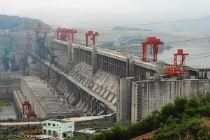The Internet of Things really is here, so set your strategy now. But what must energy and utility companies do in order to seize this opportunity?
At a recent ARC Industry Forum, the evidence was all around me. From tram doors in Oslo to the CERN Large Hadron Collider in Switzerland to healthcare clinics in the US – everywhere vendors described how sophisticated sensors and software are collecting data and using it to predict, maintain and diagnose complex systems. The Internet of Things (IoT) is here. Predictive analytics and maintenance, in particular, are becoming the rule, not the exception, in many industries.
The question is what must energy and utility companies do in order to seize this opportunity?
The answer is not to focus on the technology, but start at the top: What are your stakeholders looking for, starting with your customers? Let these questions dictate your strategy. The new technology enables you to mine huge volumes of data. Tying this data to your high priority business goals is crucial for increasing your competitive edge.
Diversify: Green portfolios, agile operations
Being able to offer customers a range of energy solutions is key. Tying yourself into developing single, high-investment energy sources with long lead times is high-risk with today’s rapid technology changes. With autonomous energy storage solutions like Tesla Powerwall emerging, predicting what the dominant power source will be, even in the next five years, is tough. There may well not be a single dominant power source, so diversification is crucial.
 Diversification in China. One example is the China Three Gorges Power Corporation (CTGPC), well known for its huge hydroelectric projects. Their Three Gorges Hydropower Dam, the largest in the world, is actually an IFS customer. The company began investing in wind power in 2007. Now it is one of the largest wind power suppliers in the world, with 31 wind projects operating in China and 33 under development. CTG recently announced a joint venture to build the UK’s largest wind farm off Scotland. CTG began moving into solar in 2011, with 37 solar projects up and running in China and 18 under construction or development.
Diversification in China. One example is the China Three Gorges Power Corporation (CTGPC), well known for its huge hydroelectric projects. Their Three Gorges Hydropower Dam, the largest in the world, is actually an IFS customer. The company began investing in wind power in 2007. Now it is one of the largest wind power suppliers in the world, with 31 wind projects operating in China and 33 under development. CTG recently announced a joint venture to build the UK’s largest wind farm off Scotland. CTG began moving into solar in 2011, with 37 solar projects up and running in China and 18 under construction or development.
From brown coal to biomass in Poland. Poland energy company, PGNIG, recently converted one of its power station boilers from coal-fuelled to biomass. A common misperception is that companies like PGNIG and energy markets in Poland and China center on “dirty, brown fuel,” but the reality is far more complex – and interesting. As climate change targets are agreed upon and emission levels get stricter, most energy providers now have strategic teams exploring the transition from single, high-emission power sources towards green, renewable, and more diverse portfolios. The role companies like IFS can play, with its extensive experience of large-scale strategic infrastructure projects, is vital. Many of our customers who started off using IFS software for maintenance have gone on to use IFS for project management of this new infrastructure investment.
Energy and Utility Companies Must Deliver Service & Results
The battle for customer loyalty is getting fiercer too, as customer choice in both power and payment programs increases. Energy and utility companies need to keep their customers in the forefront and think continuously as service providers. Any and every interaction with a customer needs to be excellent and satisfying. Customer-facing field workers need to be tech-enabled brand ambassadors. After all, it’s never been easier for customers to switch energy providers.
Norway sets the bar high for service. Norway’s largest energy provider, Hafslund, has made smart billing and services a cornerstone, providing service-centered, flexible energy solutions to private consumers and businesses. For customers, it means competitively priced energy in more flexible subscription packages.
Microgrids put consumers at the center. Customer involvement is key in the growing popularity of microgrids too. Traditionally energy grids pushed energy out to consumers, but with microgrids, consumers can feed energy back in, and are paid for doing it. Running on high levels of customer participation and interoperability, microgrids are cost-effective and disruption-free – one more sign that customers are becoming more aware of the energy supply chain. The days when large, monopolistic energy providers could expect customers to accept monthly price hikes with no complaint are over.
 Deliver and keep delivering. It isn’t only individual customers. Traditionally in periods of high investment, energy providers have received enormous funding from the government. Today’s large investors are more likely to be private or public/private bodies, and way more business-savvy. Investors expect concrete results from their investment. They will look globally for the best-managed projects that are sure to deliver results, both on price and on schedule.
Deliver and keep delivering. It isn’t only individual customers. Traditionally in periods of high investment, energy providers have received enormous funding from the government. Today’s large investors are more likely to be private or public/private bodies, and way more business-savvy. Investors expect concrete results from their investment. They will look globally for the best-managed projects that are sure to deliver results, both on price and on schedule.
In a smarter, more connected world, good management and reliable return on investment are keys to growth. The world is demanding more energy – but it also now knows far more about how it is produced and what it really costs.
You may also be interested in…
IFS IS A ‘CHALLENGER’ SAYS GARTNER 2015 MQ
The publication of the Gartner Magic Quadrant for Energy and Utilities Enterprise Asset Management Software reflects the huge investment we have made in specific industry functionality within our core product, IFS Applications. Read Blog >
IFS APPLICATIONS ENERGY AND UTILITIES
IFS is the only broad business software vendor whose origins lie in the development of an enterprise asset management (EAM) solution for energy and utilities. View Brochure >
IFS ENERGY AND UTILITIES SOLUTION MAP
A software solution map for the energy and utility industry. View Solution Map >
一元营销
确实不错,这个要实话实说!